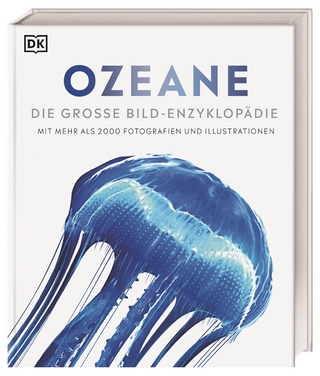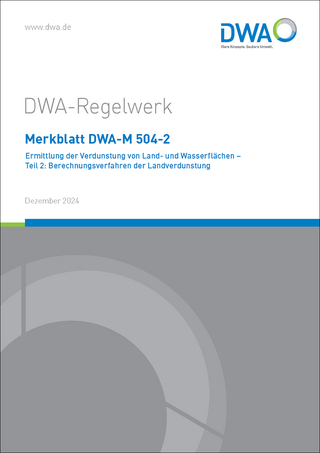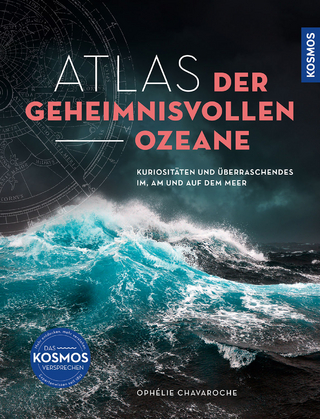
Nanomaterials for Environmental Applications
CRC Press (Verlag)
978-0-367-65338-5 (ISBN)
Nanomaterials for Environmental Applications offers a comprehensive review of the latest advances in nanomaterials-based technologies for the treatment of emerging contaminants in wastewater. It describes the latest developments in the synthesis protocols, including the synthesis of different kinds of nanostructure materials using various physical and chemical methods.
Features
Discusses the synthesis and characterization of important nanomaterials such as carbon nanostructures, metal and metal oxide nanostructures, polymer nanostructures, and smart 1D-–3D nanomaterials
Presents the latest techniques used in the characterization of nanomaterials
Covers environmental applications including the remediation of pollutants in wastewater and water purification and disinfection
Examines the sources, fate, transport, and ecotoxicology of nanomaterials in the environment.
Aimed at researchers and industry professionals, this work will be of interest to chemical, environmental, and materials engineers concerned with the application of advanced materials for environmental and water remediation.
Mohamed Abou El-Fetouh Barakat is a Professor of Environmental Sciences at both King Abdulaziz University (KAU)- Saudi Arabia, and Central Metallurgical R&D Institute (CMRDI)- Egypt. He is highly qualified in the fields of industrial waste management and pollution control as well as catalysis and nanotechnology. His experience includes academic research works in Japan, Germany, the United States and Saudi Arabia, as well as initiating and leading industrial research projects in Egypt jointly with the United States.
Rajeev Kumar is an Associate Professor in the Environmental Science Department, King Abdulaziz University, Jeddah, Saudi Arabia. His research activities are in the areas of wastewater treatment and materials science. He studies the adsorption and photocatalytic properties of nanomaterials for the removal of contaminants from wastewater.
Mohamed A. Barakat is Professor of Environmental Sciences at King Abdulaziz University, Saudi Arabia. He is highly qualified in the fields of Industrial Waste Management and Pollution Control, as well as Catalysis and Nanotechnology. Experience includes academic research works in Japan, Germany, the United States, and Saudi Arabia, as well as initiating and leading industrial research projects in Egypt, and jointly with the United States. He has published 135 papers in ISI journals, 2 patents, 8 book chapters, and 55 presentations in international conferences. His citation is about 7500 with H- index of 40. He was awarded many awards such as; KSA- ISESCO Environmental Management award-2019, Jeddah Prize of Creatives, Jeddah, Saudi Arabia (2018), Annual Publications awards, KAU University, Saudi Arabia (2011-2018), Award of Environmental Research, Academy of Scientific Research and Technology, Egypt (2003-2013), and King Hassan II Prize for Environment, Morocco (2008). He supervised more than 20 M.Sc. and Ph.D. theses, and established a new Laboratory for Advanced Technologies for Wastes Treatment in the Department of Environmental Sciences, KAU. Rajeev Kumar received M. Phil (2008) and Ph.D. degree in Applied Chemistry (2011) from Aligarh Muslim University, India. He is currently working as Associate Professor at the Environmental Science Department, King Abdulaziz University, Jeddah, Saudi Arabia. His research activities are in the areas of wastewater treatment and materials science. Rajeev studies the adsorption and photocatalytic properties of nanomaterials for the removal of contaminants from wastewater. He has completed 14 research projects and published 84 research articles and 5 book chapters with total citations about 2600 and H index 27. He is actively involved in the M.Sc. and Ph.D. thesis supervision. He was received the Kingdom of Saudi Arabia Award for Environmental Management in the Islamic World, Second Prize, Best researcher, Edition 2018-2019.
Chapter 1 Applications of Nanomaterials in Environmental Remediation
Moisés Canle, M. Isabel Fernández, and J. Arturo Santaballa
Chapter 2 Multifunctional Nanomaterials for Environmental Remediation
Archana Charanpahari, Suhas Mukherjee, Sachin Ghugal, Hariprasad, E, and Tushar Bhatt
Chapter 3 Carbon Nanotubes in Wastewater Remediation
Mohamed H.H. Mahmoud, Mohammed Alsawat, and Tariq Altalhi
Chapter 4 Polymer-Based Hybrid Adsorbents for Water Remediation
Chandra Shekhar Kushwaha, S K Shukla, and NB Singh
Chapter 5 Magnetic Nanomaterials for Wastewater Remediation
Dimple Sharma, Sonika Singh, Jandeep Singh, and Harminder Singh
Chapter 6 Alumina-Based Adsorbents
Shaziya H. Siddiqui, Prerna Higgins, and Runit Isaac
Chapter 7 Silica Nanomaterials for Water Remediation
Md. Abu Taleb, Rajeev Kumar, and Mohamed Abou El-Fetouh Barakat
Chapter 8 Aluminosilicate-Based Adsorbents for Removal of Water Contaminants: Advanced Statistical Physics Models
Moaaz K. Seliem, Mohamed Mobarak, Essam A. Mohamed, and Ali Q. Selim
Chapter 9 Antimicrobial Nanomaterials for Water DisinfectionMuzammil Anjum, Samia Qadeer, Muhammad Waqas, Azeem Khalid, Rashid Miandad, and Mohamed Abou El-Fetouh Barakat
Chapter 10 Soil Remediation: Application of Nanoparticles
E Lokesh Goud, Prasann Kumar, and Bhupendra Koul
Chapter 11 Nanomaterials for Air Purification: Advances and Challenges
Daniel Pramudita, Veinardi Suendo, Muhammad Mufti Azis, and Antonius Indarto
Chapter 12 Nanomaterials in the Environment: Sources, Fate, Transport and Ecotoxicology
Thabitha P. Dasari Shareena, Asok K Dasmahapatra, and Paul B Tchounwou
| Erscheinungsdatum | 07.02.2022 |
|---|---|
| Reihe/Serie | Emerging Materials and Technologies |
| Zusatzinfo | 29 Tables, black and white; 95 Line drawings, black and white; 27 Halftones, black and white; 122 Illustrations, black and white |
| Verlagsort | London |
| Sprache | englisch |
| Maße | 152 x 229 mm |
| Gewicht | 453 g |
| Themenwelt | Naturwissenschaften ► Geowissenschaften ► Hydrologie / Ozeanografie |
| Technik ► Bauwesen | |
| Technik ► Elektrotechnik / Energietechnik | |
| Technik ► Umwelttechnik / Biotechnologie | |
| ISBN-10 | 0-367-65338-9 / 0367653389 |
| ISBN-13 | 978-0-367-65338-5 / 9780367653385 |
| Zustand | Neuware |
| Informationen gemäß Produktsicherheitsverordnung (GPSR) | |
| Haben Sie eine Frage zum Produkt? |
aus dem Bereich


